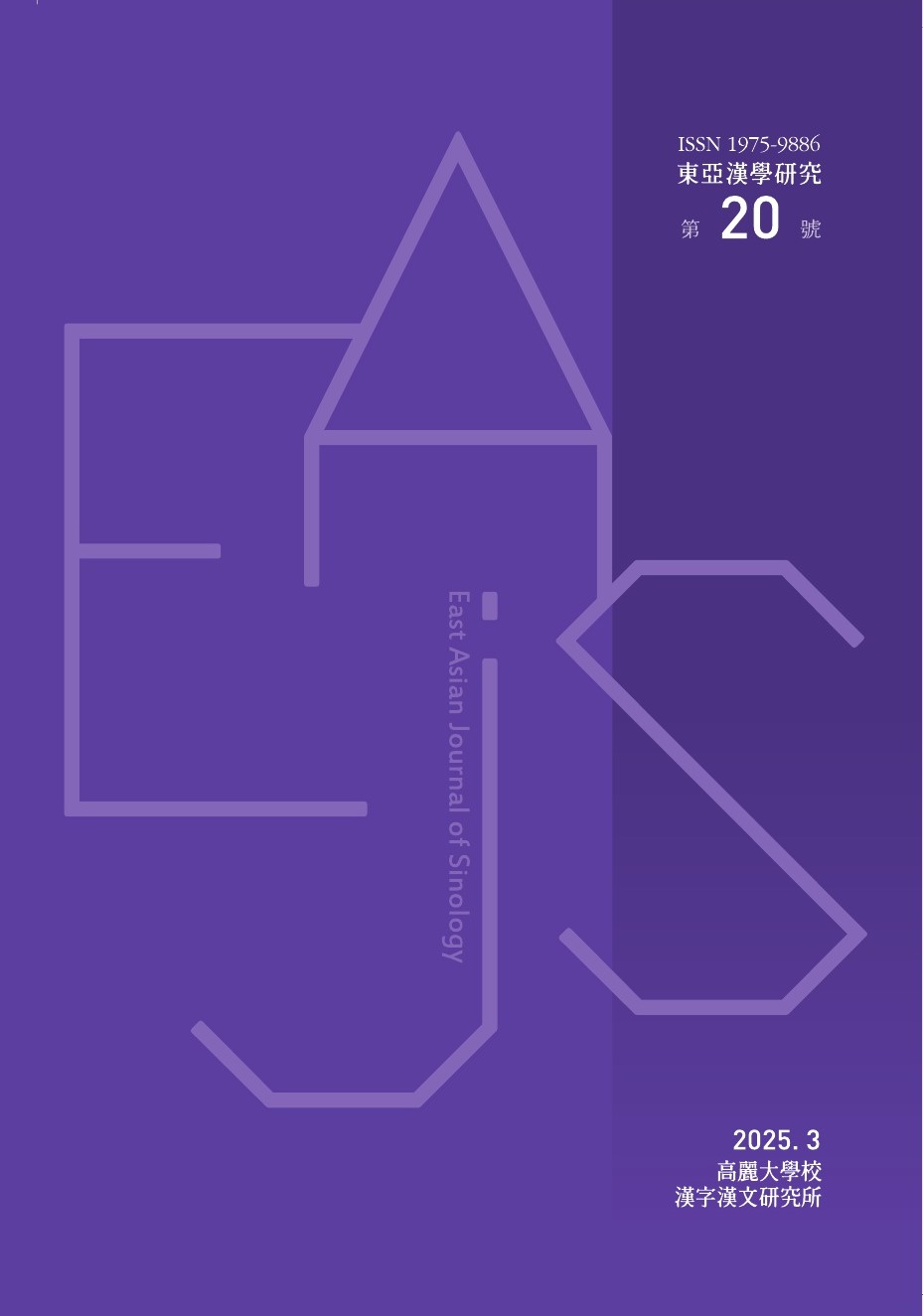- 영문명
- New Considerations of the Formation and Evolution of Chinese Texts in Ancient Japan
- 발행기관
- 고려대학교 한자한문연구소
- 저자명
- 스미요시 토모히코(住吉朋彦)
- 간행물 정보
- 『동아한학연구』제21호, 9~77쪽, 전체 69쪽
- 주제분류
- 어문학 > 언어학
- 파일형태
- 발행일자
- 2025.09.30
11,080원
구매일시로부터 72시간 이내에 다운로드 가능합니다.
이 학술논문 정보는 (주)교보문고와 각 발행기관 사이에 저작물 이용 계약이 체결된 것으로, 교보문고를 통해 제공되고 있습니다.

국문 초록
古代 일본의 학술사상과 과학지식은 漢籍의 수용과 함께 진전되어 왔다. 그것은 처음에는 韓半島의 국가들을 통해 이루어졌으며 그 뒤로는 중국 여러 왕조와의 외교・유학・무역을 통해 실시되었다.
고대 일본의 한적 보급은 처음에는 漢譯佛典의 해석을 과제로 삼은 불교도의 손에 의해 행해졌다가 궁정정치를 담당하는 관료가 그 뒤를 이었다. 그 과정에서 일본인에 의한 한적의 書寫・校訂이 모든 분야에 걸쳐 확산되었다. 이때 불교도가 한반도의 기법을 배워서 만들어낸 訓讀 방법과 그것을 典籍에 기록하는 습관이 길러져, 일본어로의 번역을 지시하는 訓點을 포함하는 것이 일본 한적의 가장 큰 특색이 되었다.
그 혜택을 한 몸에 받은 것은 헤이안시대(平安時代)에 힘을 갖게 된 紀傳道의 儒者이다. 그들은 유교 도덕을 습득하고 자유롭게 한문을 사용하는 관료라는 바탕 위에 중국의 文史에 精通한 전문성을 더하여 높은 수준으로 朝政에 참여하였다. 스가와라 가문(菅原家)과 오오에 가문(大江家)이 그 대표적인 氏族이다.
또 그들은 스스로 詩文을 다루며 독특한 修辭法을 발달시킴으로써 일본 한문학의 일대 전성기를 실현하였는데 그 기반이 된 것은 博士 가문에 축적되었던 훈점이 들어간 한적의 證本이었다.
한편 한적 原本의 渡來는 출판인쇄의 발명・보급이라는 중국의 사정에 따라 새로운 파동을 받으며 진행되었다. 그것은 헤이안시대 중기 入宋留學僧 그리고 그들을 맞이한 宋商과도 관계가 있던 상급 귀족의 주변에서 시작되었다. 그런데 일본의 北宋版 수용은 처음에는 佛典에서 시작되었다가 北宋監本의 파급이라는 측면을 가지면서 紀傳道 博士家의 요구에 응하는 형태로 실현되었다. 또 그즈음 나라(奈良)의 사찰에서는 宋版을 본뜬 敎學書의 출판도 시작되었다.
그러나 헤이안시대 후기 院政期에 이를 즈음, 후지와라 씨(藤原氏)에 의한 朝政의 사유화를 배경으로 紀傳家의 진출은 포화상태를 맞아 그들의 학문은 차츰 쇠퇴해갔다. 그때 상대적으로 지위를 향상시켰던 것은 漢學의 기초를 담당해온 明經道의 儒者이다.
院政期에는 권력구조의 변동을 배경으로 漢學과 朝政과의 관계가 반성 되며 經學의 가치가 재인식되었다. 이러한 움직임은 각 방면에서 보이는데 최종적으로는 明經道 博士家의 활성화로 이어진다. 그 과정에는 宋版의 移入이 깊숙이 관련되어 宋版의 校訂本文이 博士家 證本의 가치를 쇄신하였다. 그래서 舊鈔本 漢籍에 版本과의 異同 및 音義・釋義를 移寫하는 현상이 널리 퍼져 그것을 정력적으로 행한 明經道 키요하라 가문의 대두가 일어났던 것이다.
키요하라 가문의 대두는 일본 한학에 있어서 중세의 시작이 되었지만 일본인의 손에 의한 한적의 출판에는 아직 시간이 필요했으며 중세도 후반에 접어든 南北朝時代까지 기다려야 했다.
영문 초록
The development of academic thought and scientific knowledge in ancient Japan progressed in tandem with the reception of Chinese texts. Initially, this occurred through the countries of the Korean Peninsula, and later through diplomacy, study abroad, and trade with the various Chinese dynasties.
The dissemination of Chinese texts in ancient Japan was initially undertaken by Buddhists tasked with interpreting Chinese translations of Buddhist scriptures, followed by the bureaucrats who administered court politics. During this process, Japanese Sinologists' transcription and collation of Chinese texts spread across all fields of study. Concurrently, the method of kundoku reading—developed by Buddhists who learned techniques from the Korean scholars—and the practice of recording it in texts took root. This practice, often accompanied by kunten—codes for translation—indicating Japanese translations, became a major characteristic of Japanese Chinese texts.
The primary beneficiaries of this development were the Confucian scholars of the kiden-dō school, who rose to prominence during the Heian period. Building upon their foundation as bureaucrats well-versed in Confucian ethics and fluent in Classical Chinese, they added expertise in Chinese literature and history, enabling them to participate in court politics at a high level. The Sugawara and Ohe families were representative clans of this group.
They also composed poetry and prose themselves, developing unique rhetorical techniques that ushered in a golden age of Chinese-style literature in Japan. The cornerstone of this achievement was the reference texts—Chinese classics annotated with kunten—stored in the homes of these scholars.
Meanwhile, the import of original Chinese texts progressed amid new waves of change driven by developments in China: the invention and spread of woodblock printing. This shift began in the mid-Heian period among the monks studying in Song China and the high-ranking nobles who welcomed them while also maintaining ties with Song merchants. Thus, the reception of Northern Song editions in Japan initially focused on Buddhist scriptures, though it also involved the spread of Northern Song official editions, ultimately fulfilling the demands of the Kiden-dō scholar families. Around this time, Buddhist temples in Nara also began publishing scholarly texts, learning from the Song editions.
However, at the start of the late Heian period, also known as the Insei period, against the backdrop of the Fujiwara clan's privatization of court politics, the advancement of the Kiden-dō scholars reached saturation, and their scholarship gradually declined. At this time, those who relatively improved their status were the Confucian scholars of the Myōgyō-dō school, who had been the foundation of Japanese Sinology.
During the Insei period, shifts in the power structure prompted reflection on the relationship between Sinology and court administration, leading to a renewed appreciation for the value of Confucian studies. This movement was observed across various sectors and ultimately revitalized the Myōgyō-dō scholar families. The importation of Song editions played a significant role in this process, as the collated texts of these editions renewed the value of the scholar families' authoritative editions. Consequently, a widespread phenomenon emerged where differences between old manuscript editions and printed editions, along with phonetic readings and commentaries, were transcribed into the old manuscript editions. This vigorous activity led to the rise of the Kiyohara family of the Myōgyō-dō tradition.
The rise of the Kiyohara family marked the beginning of the medieval period in Japanese Sinology. However, the publication of Chinese texts by Japanese hands still required time, and it was not until the late medieval period, the Nanboku-chō era, that this would occur.
古代における日本の学術思想や科学知識は、 �
목차
1. 上古의 漢學과 漢籍 수용
2. 紀傳道의 융성과 舊鈔本의 파생
3. 宋版 渡來 초기의 漢籍 수용
4. 키요하라 가문(淸原家)의 대두까지
키워드
해당간행물 수록 논문
참고문헌
교보eBook 첫 방문을 환영 합니다!

신규가입 혜택 지급이 완료 되었습니다.
바로 사용 가능한 교보e캐시 1,000원 (유효기간 7일)
지금 바로 교보eBook의 다양한 콘텐츠를 이용해 보세요!



